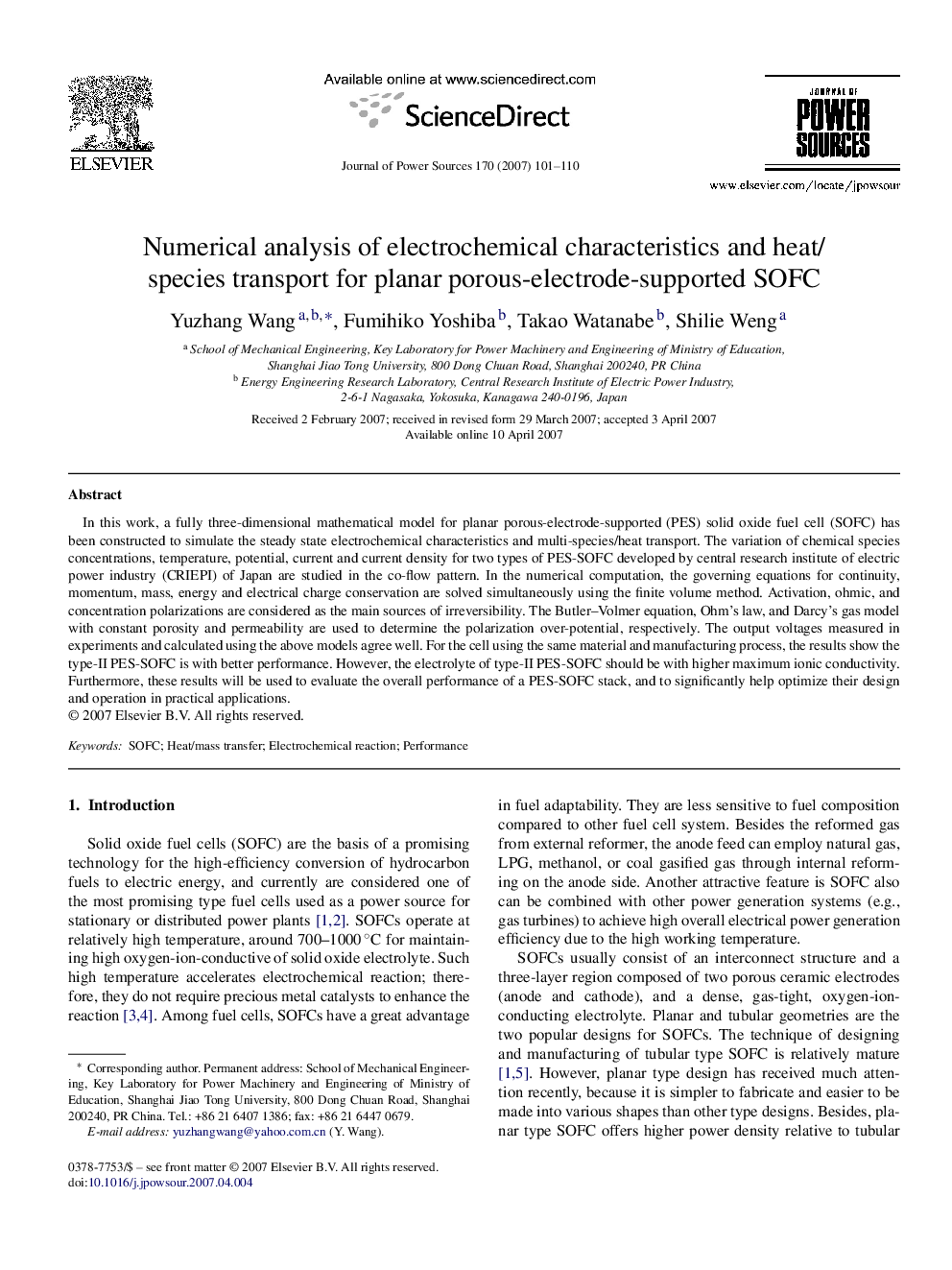| Article ID | Journal | Published Year | Pages | File Type |
|---|---|---|---|---|
| 1291378 | Journal of Power Sources | 2007 | 10 Pages |
In this work, a fully three-dimensional mathematical model for planar porous-electrode-supported (PES) solid oxide fuel cell (SOFC) has been constructed to simulate the steady state electrochemical characteristics and multi-species/heat transport. The variation of chemical species concentrations, temperature, potential, current and current density for two types of PES-SOFC developed by central research institute of electric power industry (CRIEPI) of Japan are studied in the co-flow pattern. In the numerical computation, the governing equations for continuity, momentum, mass, energy and electrical charge conservation are solved simultaneously using the finite volume method. Activation, ohmic, and concentration polarizations are considered as the main sources of irreversibility. The Butler–Volmer equation, Ohm's law, and Darcy's gas model with constant porosity and permeability are used to determine the polarization over-potential, respectively. The output voltages measured in experiments and calculated using the above models agree well. For the cell using the same material and manufacturing process, the results show the type-II PES-SOFC is with better performance. However, the electrolyte of type-II PES-SOFC should be with higher maximum ionic conductivity. Furthermore, these results will be used to evaluate the overall performance of a PES-SOFC stack, and to significantly help optimize their design and operation in practical applications.
